Wat Muang is a temple that is the pride of Ang Thong, the province in which it is located. Located 8 km from the city, in the Wiset Chai Chan district, in the middle of the countryside, stands what is today the 7th largest statue in the world and THE largest in Thailand. Just that.
With those 92 m high and 63 m wide, there is no doubt that it is impressive. However, the temple is not just about the big Buddha, but is full of surprises. A quick review of the visit!
Visiting Wat Muang in Ang Thong is still possible as a day trip from Bangkok. Located in 120 km from the capital, this remains an acceptable distance for a round trip.
The temple is located at 8 km from Ang Thong town, the main city giving its name to the province. It is also only 40 km further north of the Ayutthaya Historical Park and 50 km southwest of Lopburi, another attraction in this corner of Thailand.
From Bangkok
You need to go to the Mo Chit bus terminal, towards the north of the city (BTS station of the same name then tuk tuk or taxi to the terminal).

There you will find minivans running on average every half hour (from that they are filled) from 6 a.m. to 18 p.m. Count 100 Baht per person.
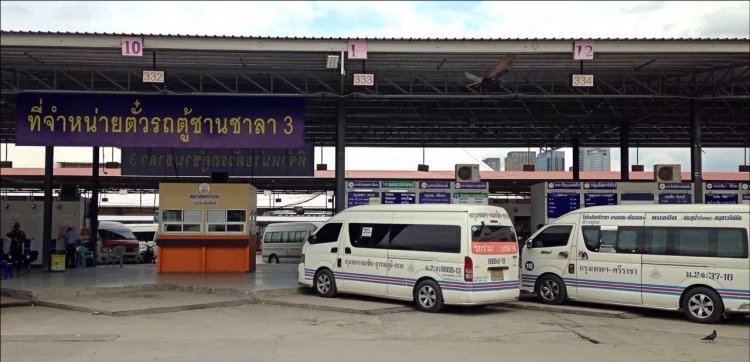
Once you arrive at the Ang Thong bus terminal, you have 8 km to the temple. To do this, if you are adventurous, motorbike taxis can do the trip for 100 Baht (but what about the return…)
The best thing is to take a tuk tuk which can take you there, wait for you and bring you back according to a formula of which I do not know the cost but I estimate that it should not exceed 1 Baht.
If you want to keep it simple, you will find private vans through local agencies in Khao San for example or even taxis on the street that can take care of this excursion. In this case, expect to pay around 3 Baht, this includes the highway, gasoline and the driver. In this case, you will have it for the day so you can combine the visit of Wat Muang with the main sites of Ayutthaya or also go to Lopburi.
From Ayutthaya
Same procedure as above. Minivan to Ang Thong and same story. Don't try to go there by tuk tuk, it's too far for them. However, a taxi can take you there.
I would like to clarify in relation to the information above:
If you are on a limited budget, it is possible to take a minivan from Ang Thong (from the street next to the bus terminal, they will normally have a number, 951 or 952) which then goes past the road leading to the temple. For 20 Baht, he can drop you off there (it's a little after a PTT gas station), you will then have the last 950 meters to cover to the temple (but again, what about the return...)
From Lopburi
Another possible option to get to Ang Thong. If you are passing through and/or plan to visit the Prang Sam Yod, an old Khmer temple and see the monkeys of Lopburi, then bingo.
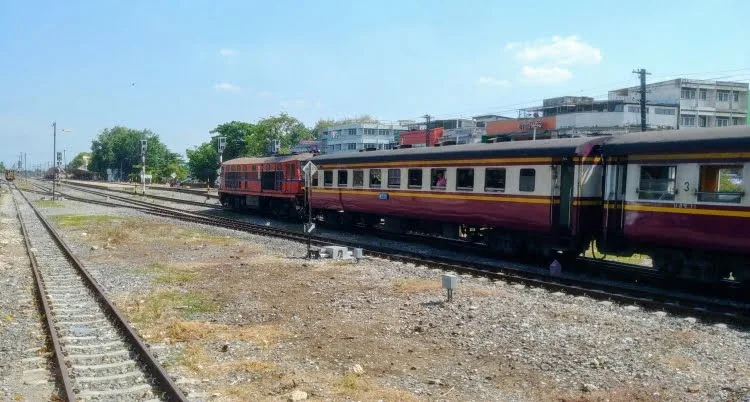
To do this, you can either come by bus or by train from Hua Lamphong station in Bangkok. For a not too late arrival, you have departures from respectively:
| 07:00pm | 08:30pm | 09:25pm | 10:50pm |
A short history of the Great Buddha of Ang Thong
I just learned this while writing this article, but Wat Muang, although the buildings we see are all recent, is built on the site of an ancient temple, more than 300 years old.
Indeed, at the time when Ayutthaya was the flamboyant capital of the kingdom, a small temple was erected in this countryside, around 1687. Unfortunately, the Burmese army destroyed the capital in 1767, they burned many places of worship in their path and left a veritable field of ruins behind them.
As a result, the then Wat Muang was abandoned. Until a local monk, Phra Kru Vibul Arjarakhun decided to make it his place of worship. Although he settled there in 1983, official authorization to make it an active temple again did not arrive until 1984.
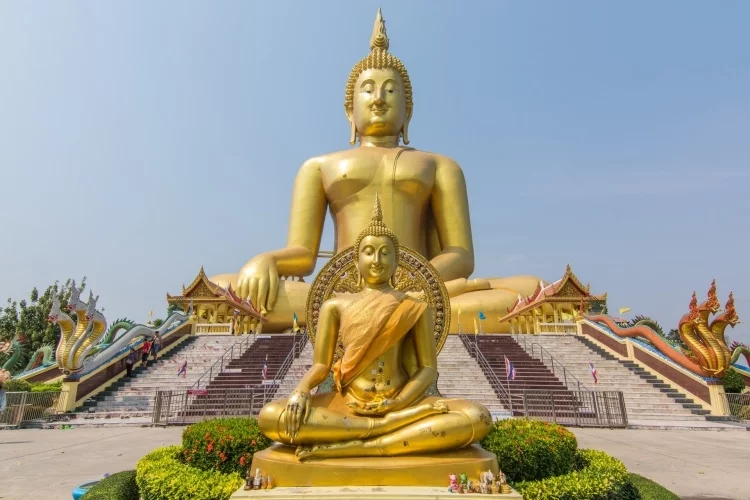
It was not until 1991 that the idea of building the largest Buddha statue in the world (at the time of its conception) was launched, in honour of His Majesty King Bhumibol (Rama IX, now deceased).
With the foundation stone laid in March 1991, construction was completed some 16 years later in July 2007. The statue, named Maha Nawamin Sakyamuni, represents a budget from donations totaling more than 100 million Baht (€2.7 million).
His full name turns out to be Phra Phuttha Mahanawamintra Sakayamunee Sri Visejchaicharn (Thai: พระพุทธมหานวมินทรศากยมุนีศรีวิเศษชัยชาญ), given by the monk who became abbot and who was behind the revival of Wat Muang, Phra Khru Vibul Arjarakun.
- Phra Phuttha (พระพุทธ-) = The Buddha
- Mahanawamintra (มหานวมินทร-) = The Great (King Bhumibol)
- Sakayamunee (ศากยมุนี) = Sakayamunee Buddha (title given to Siddartha Gautama)
- Sri (ศรี) = sacred by
- Visejchaichan (วิเศษชัยชาญ) = Wiset Chai Chan, the name of the district where the statue is located
Put together, this gives in good French: The Great Gautama Buddha of Wiset Chai Chan, built to commemorate the great king Bhumibol. Note that although the abbot who initiated the revival of this temple has died, his mummified body is visible inside the mirrored building. (see the information in the short “guided tour” below).
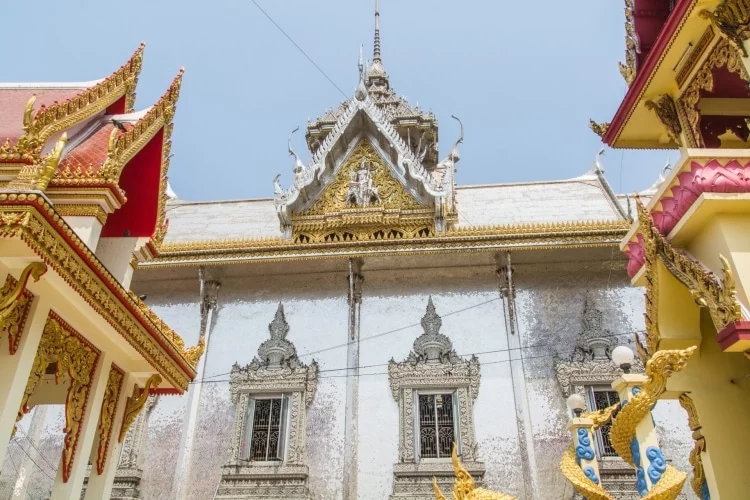
What to expect at Wat Muang
Arriving at the parking lot in front of the main entrance, the Wiharn (place of prayer) does not go unnoticed since it is surrounded by pink petals, symbolizing the lotus flower. Photos at the entrance of a secondary hall show us that the latter must have been the first building built or rebuilt, because ultimately I do not know the state of the original temple.
The photos showing the site before work do not show much in the way of possible ruins but rather a wasteland. The whole thing having therefore been done from A to Z.
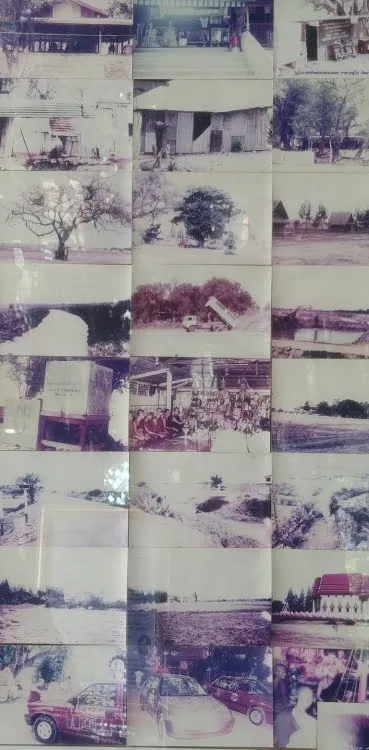
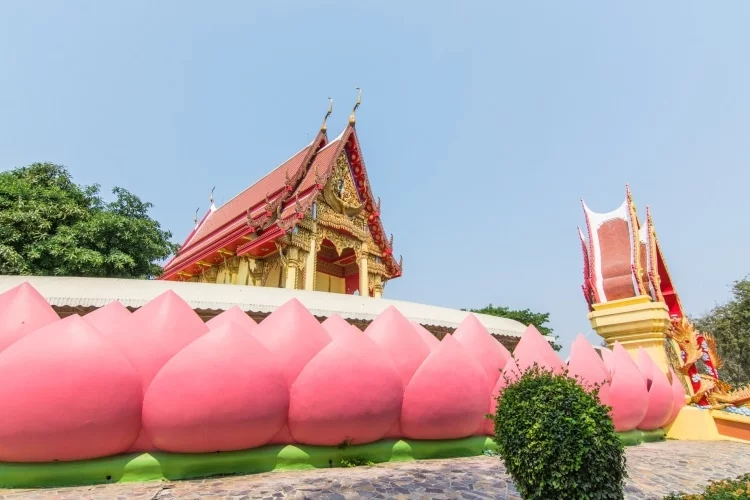
Across the street, behind some shops selling children's toys and souvenirs, is what I call the mirror building. This one is, in fact, covered on the outside with multiple mirrored tiles, giving a grayish but stylish appearance to the whole.
LThe interior is not to be outdone, with the appearance of a hall of mirrors revisited with a touch of Thai. From the mirrors on the ceilings to those covering the interior walls, everything is reminiscent, in miniature, of the imposing What Tha Sung located further north at Uthai Thani (the latter is also nicknamed the temple to mirrors).
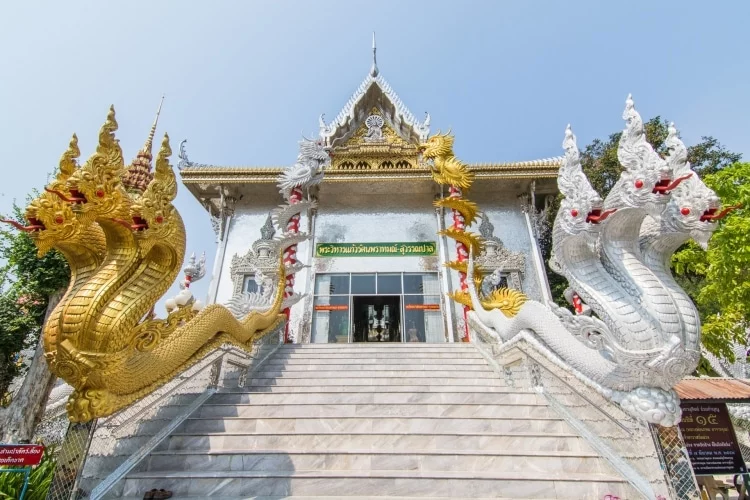
While we can see the head of the imposing Buddha behind all these buildings, we can also see a kind of Chinese temple on the left. Recognizable by these columns surrounded by dragons; the dominant colors red and gold, it sits in the middle a divinity with multiple arms, Guanyin.
Guanyin is the Chinese form of the Buddhist deity Avalokitesvara, often considered a female version of the Buddha. She is also known as the goddess of compassion (I even prefer the term mercy).
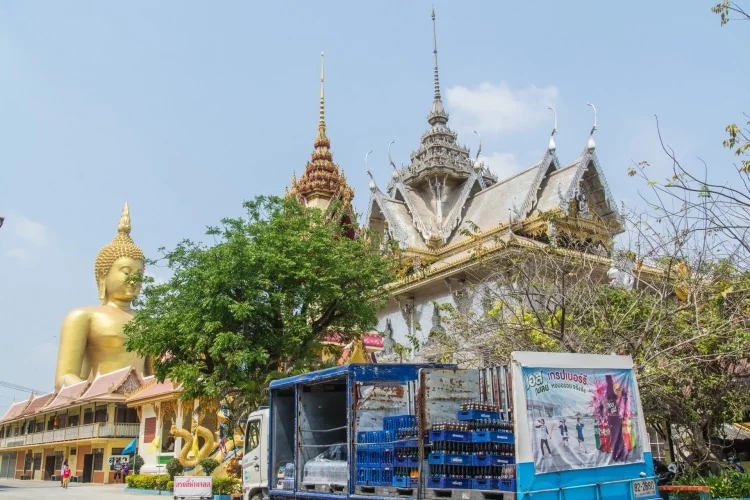
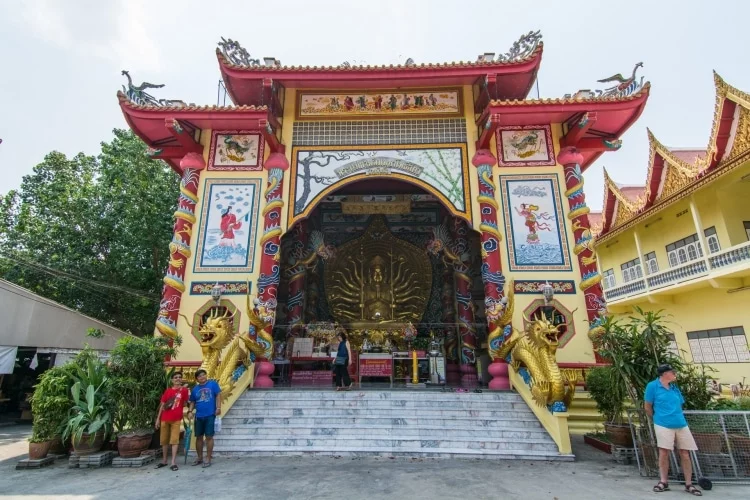
If you go to the opposite side of this shrine, right side of the mirrored building, you will first be greeted by a " lucky buddha", the anglicism as defined by the Thais, but more generally known as "Laughing Buddha" in French.
Its A cheerful, pot-bellied appearance is characteristic of this Chinese version of a Buddha that is not really one. called Buda by the Chinese (And Hotei by the Japanese), it would be the representation of a Chinese monk from the 10th century. According to Taoists, he is considered the god of contentment and abundance. For the Thais, it is mostly seen as a symbol of good luck (hence the expression lucky buddha) and fortune and used as an auspicious symbol in the Feng Shui.
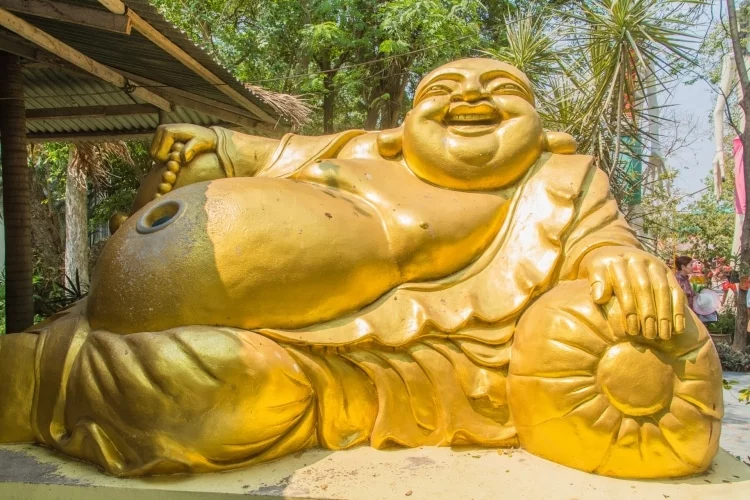
Garden of Hell
Just after the skeleton in traditional clothes greeting you with a wai, the Thai greeting (which is also a well-codified mark of respect), you will immediately be surprised by these two large statues sticking out their tongues.
Figures of a man and a woman, the frightening appearance symbolizes the ghostly side of what is similar to wandering souls. At their feet and around, you then enter what is called a garden of hell.
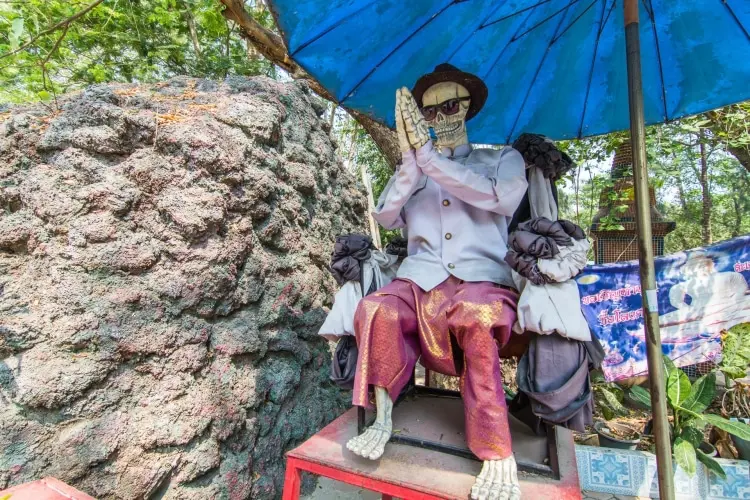
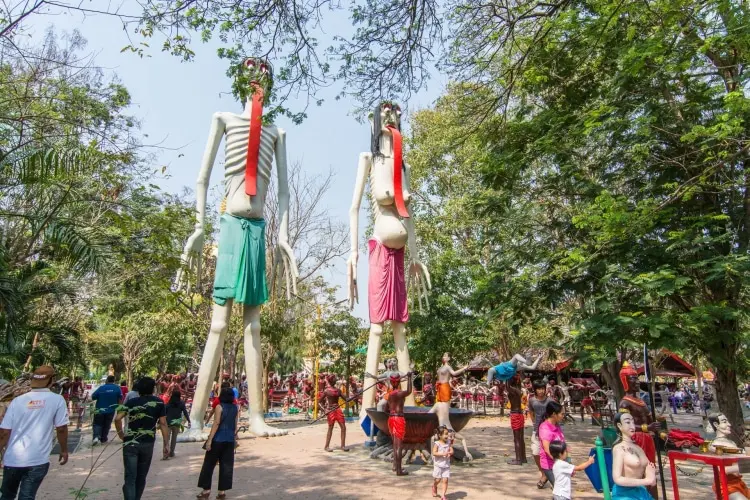
Recurring figure In Thai temples, the most famous example is the What Wang saen suk and his " hell Garden", located between Chonburi et Pattaya, towards Bang beach saen.
Just like there, the garden of hell of What Muang is intended to be a literal representation of hell (called naraka by Thais), as conceived in Buddhist mythology. This gives different scenes with groups of bloody sculptures, allegories representing the martyrdom of sinners. Sensitive souls abstain!
This is generally seen within the family by Thais who see it as a form of pedagogy for learning. a behave well and do good deeds to avoid these bad spells.
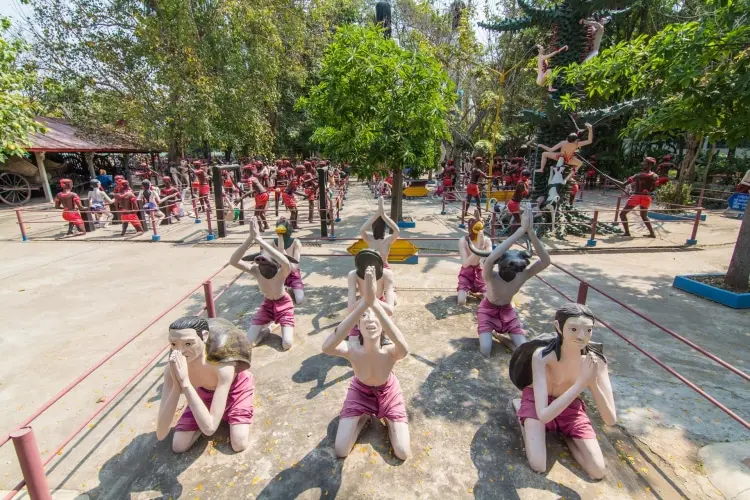
A flagship position, in the middle of the countryside
After this moment of “fear”, there it is finally, majestic before you. The Buddha sits in the position called Mara Vichai, also known as Bhûmisparsha-Mudrā, because of the position of the hands. This is one of the most common positions.
The Buddha is seated with his legs crossed in the lotus position. His right hand is placed on his knee, fingers pointing towards the ground while his left hand is flat on his leg, palm up.
This is a reference to Buddhist mythology according to which the Buddha resisted the temptations of the maras, demons who appeared in the form of maidens to prevent the Buddha from attaining enlightenment. He then touched the ground to ask for help from the goddess called Phra Mae Thorani.
Under the kind of tent, allowing Thais to pray in the shade, it is sometimes calm if during the week, sometimes bustling if it falls on a weekend or public holiday. There is a statue of the former master of the place.
The statue has just been renovated this year (2019) and has regained its golden glow contrasting with the blue sky (when the weather is nice of course).
Climbing the stairs, you can access the terrace at the foot of the statue. Close to this imposing structure, you feel even smaller. In addition to being able to admire a partial view of the countryside surrounding the site, you can attend the moment of prayer, specific to the place.
Indeed, a small platform is provided, allowing one to touch the tip of Buddha's finger. Given his size, some still have to perform on tiptoe.
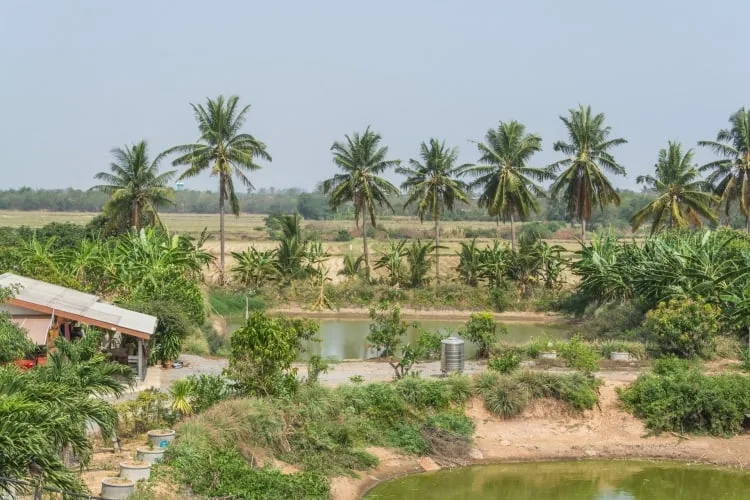
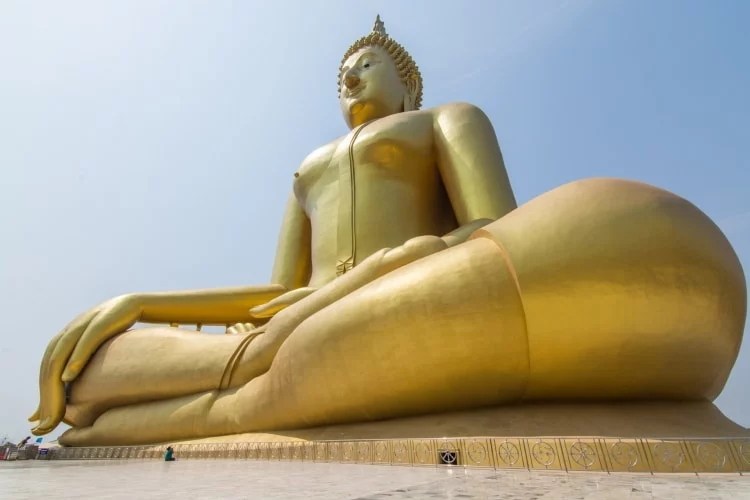
Scenes from life and good deeds
Once back down to earth, walk along the area near the pool that you will see on your left. You will then pass representations of the life of Buddha (aka Gautama Sidhartha), a scene from the Ramakien, a Thai mythology omnipresent in temples and also some more "raw" scenes of war between the eternal enemies, the Thais and the Burmese.
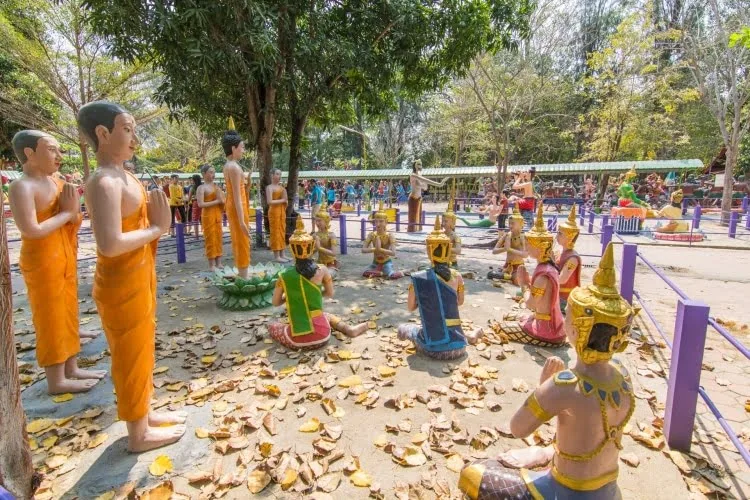
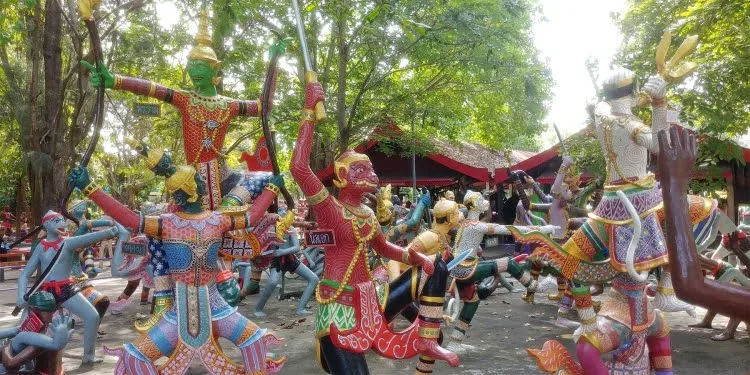
As you walk towards the basin you pass a small local market, probably sleepy on weekdays but there should always be the little lady selling bread. A joint action en Thailand to do a good deed is to feed the fish. And what fish! Large, voracious catfish await you in this pool facing the impassive Buddha.
For 12 Bahts, you will have achieved a good point for your karma 😉 An activity that will certainly delight your children, what's more!
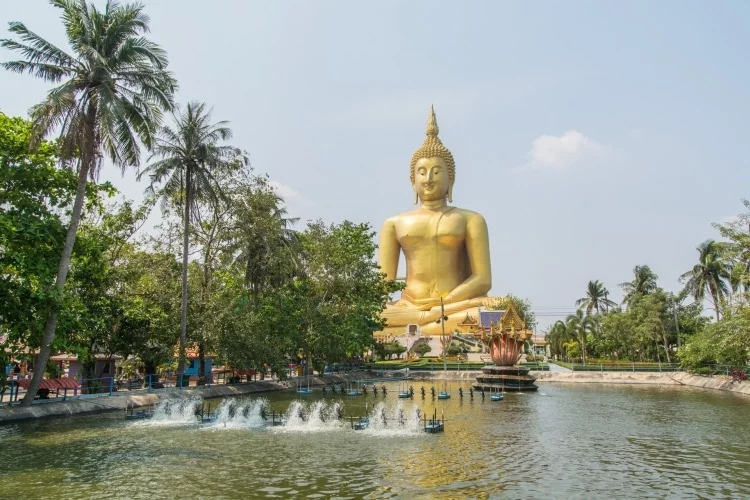
To finish the loop, you will pass in front of the area dedicated to Chinese mythology. Around the Chinese pagoda you will have rows of bells. In the background, statues of Thai war heroes (including women!).
À On the side, scenes recounting the epic of the monkey king and a series of monks with disconcerting appearances. Rather cheerful overall, but with poses that raise questions. Le all under the benevolent eyes of a statue of the goddess of mercy, this time in all simplicity, without her 1000 arms.
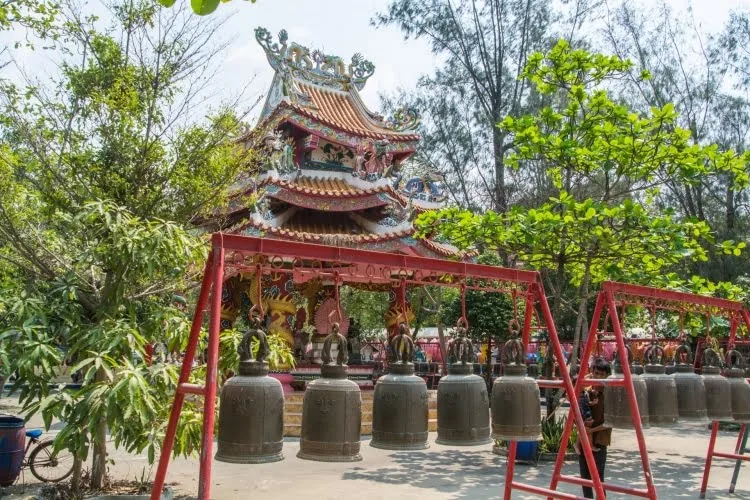
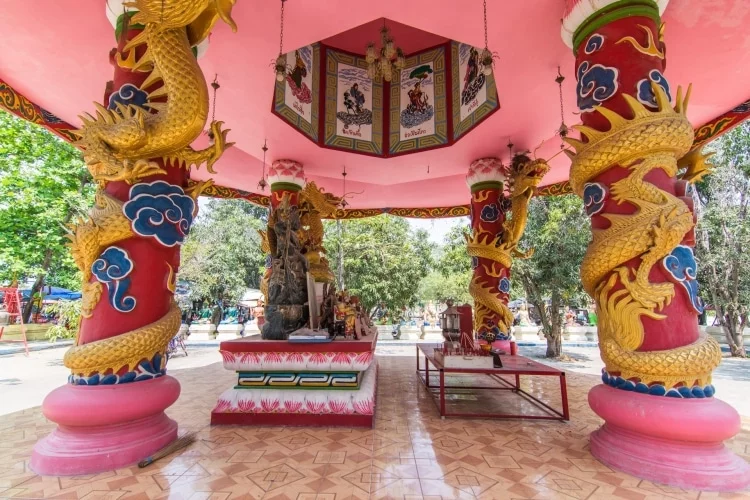
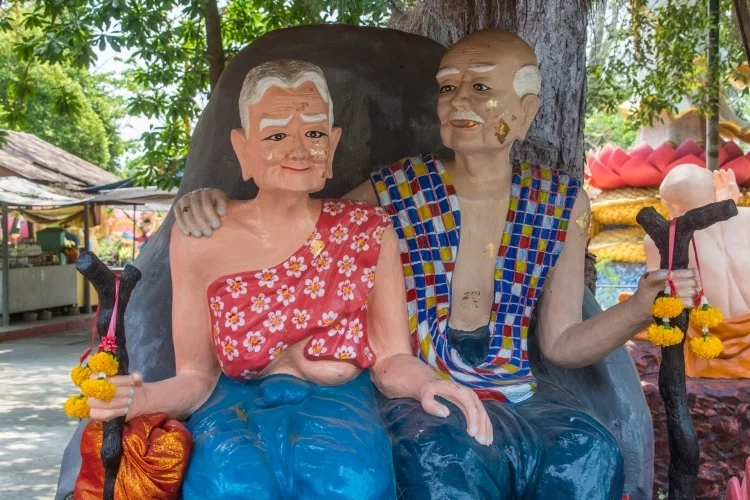
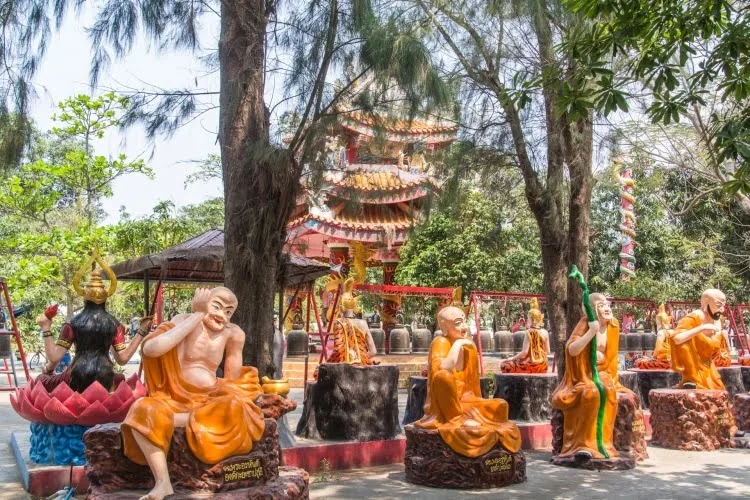
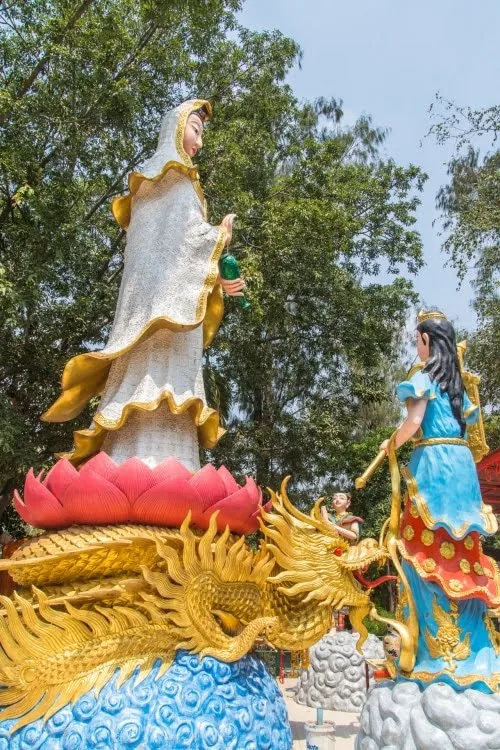
Bonus: a coffee break, with a view of the temple and its Buddha!
If, like me, caffeine is your friend and you are independent in terms of transport, you can stop at the café on the side of the main road, 1 km from the temple, just 100 m after the intersection. You will have seen the rice fields (if the season is right, it's great) but also a breathtaking view of the great Buddha which juts out happily above the fields.
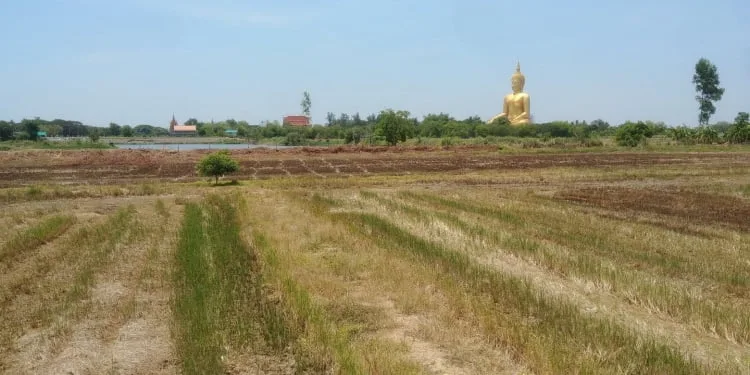
Where to sleep in Ang Thong
I've never actually stayed overnight in Ang Thong itself; its proximity to Ayutthaya means I'm usually just passing through and stay further north (often in Sukhothai). Given the distance from Bangkok, it's even possible to visit for the day, making it unnecessary to stay overnight.
The only scenario I can think of is if you're using public transport and plan to continue your exploration north later. In that case, the timetable will likely force you to postpone your trip, even if sleeping in LopburiAnother interesting stop in this central part of Thailand also remains an option.
Book a hotel in Ang Thong
My opinion on Wat Muang
There is an obvious “Buddha Land” element. Lots of colors, things that seem crazy, too much. However, the size of the statue alone is impressive and worth a visit.
Even If the site is quiet on the day of your visit and will lack a dose of devotion and selfies of the Thais animating the place, it remains interesting. Which will not be the case on the weekend, the latter being popular and quite visited by the locals.
And in any case, it remains exclusively not very touristy. You will therefore be at the heart of the daily life of Thais, with its small shops and local restaurants. Here you will come across sellers of lottery tickets or even the fortune teller waiting for the customer, the nun selling camphor-based products as well as bottles of honey and children's toys. Something to satisfy everyone!
Did you like the article? share on Pinterest!
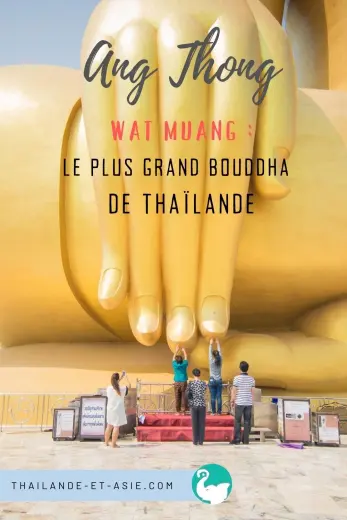


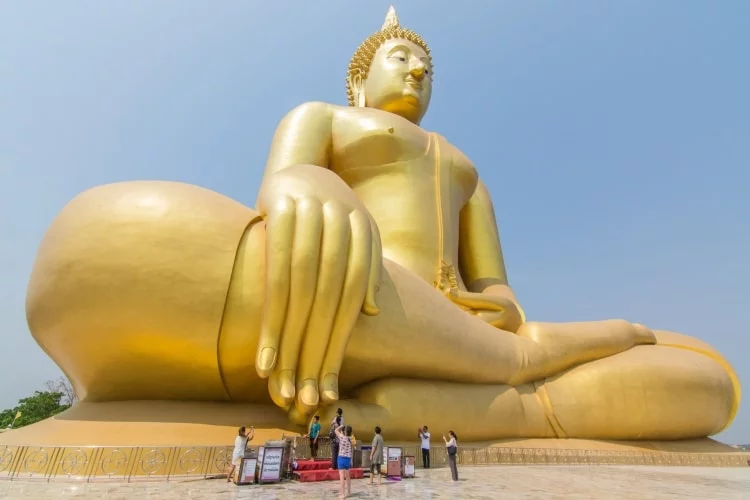
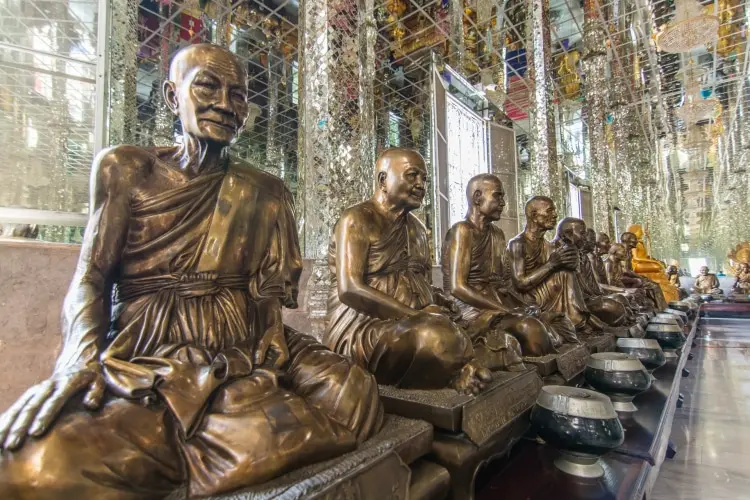
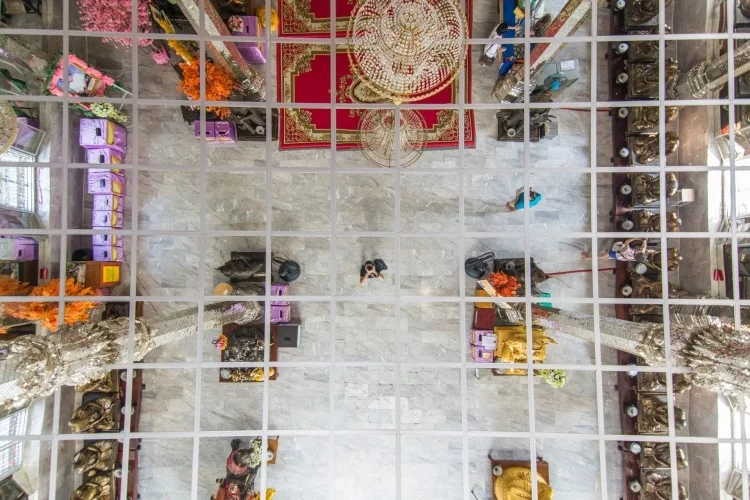
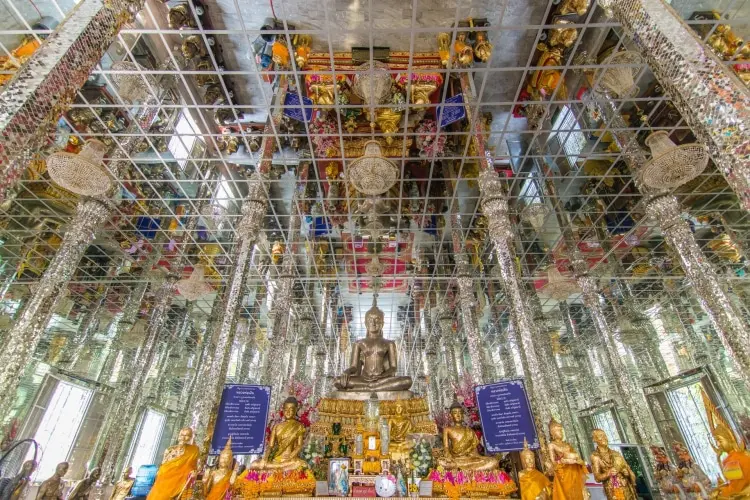
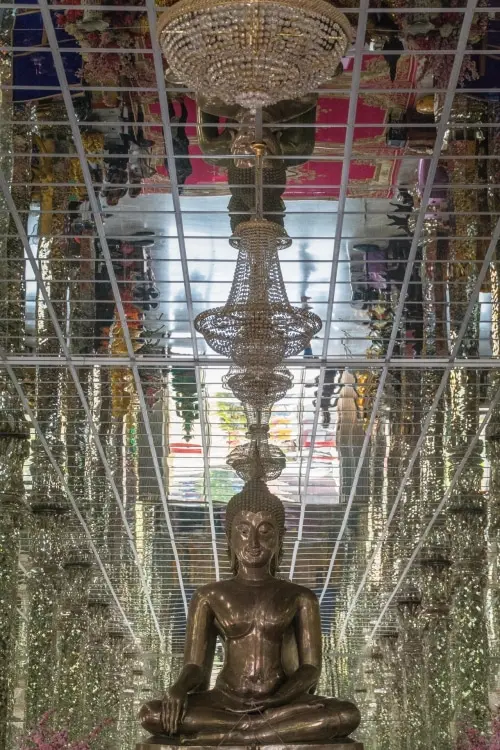
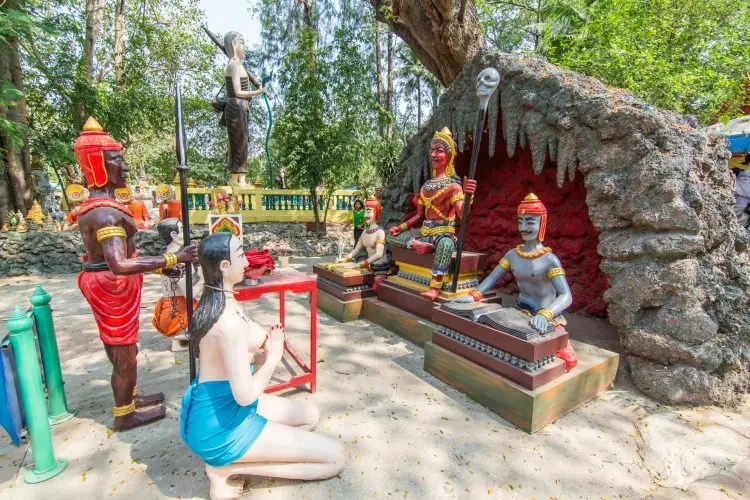
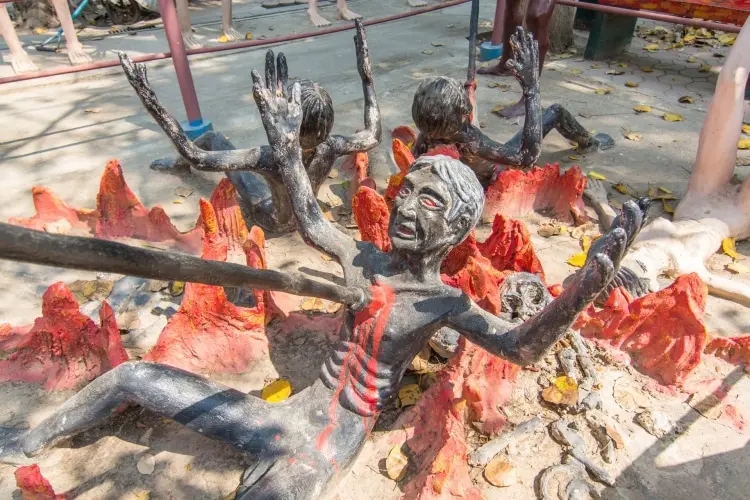
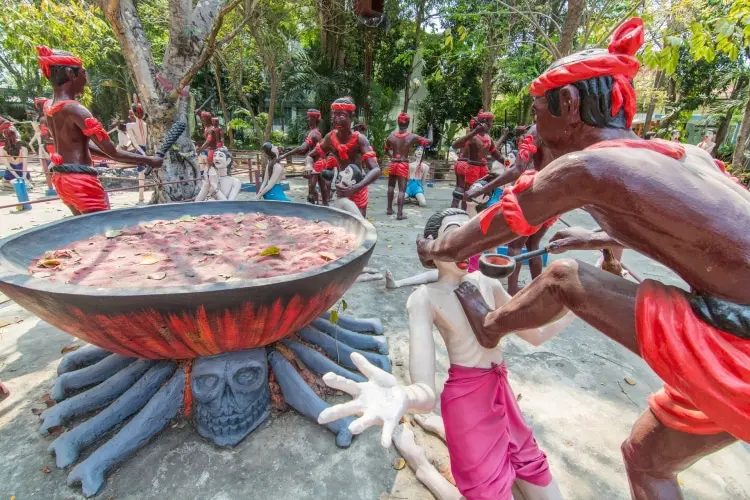
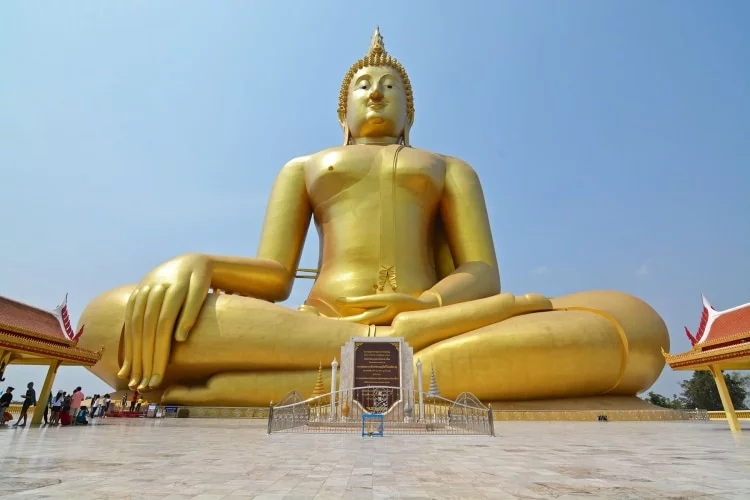
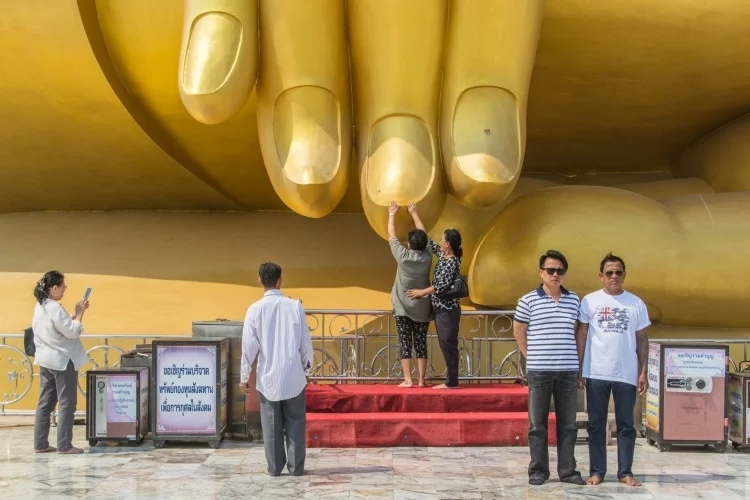
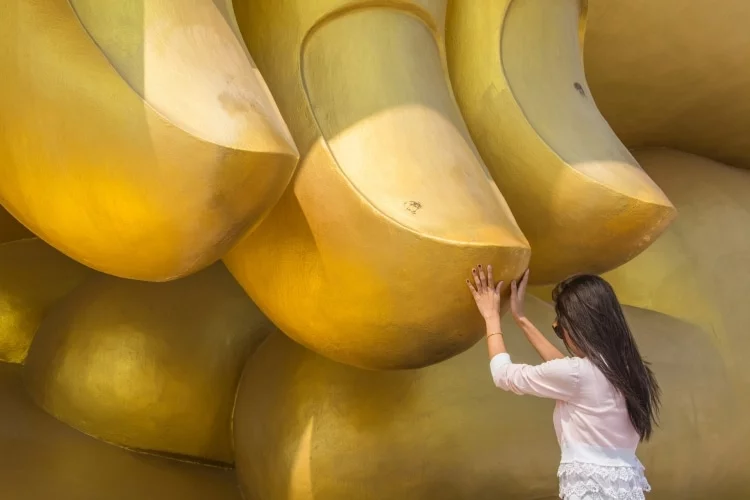
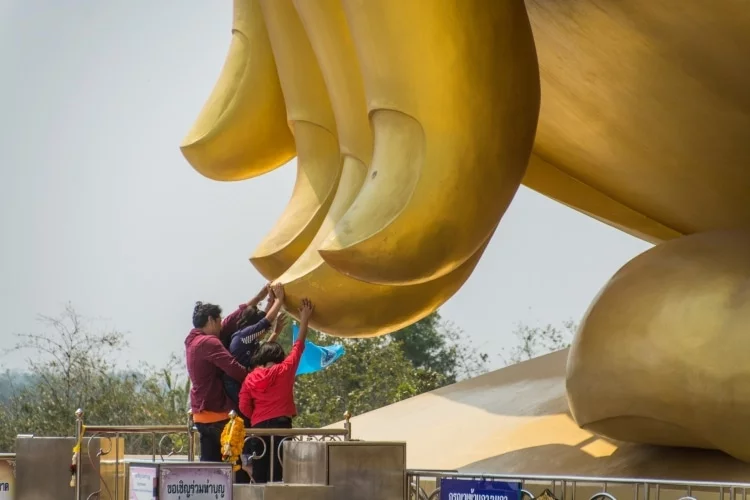
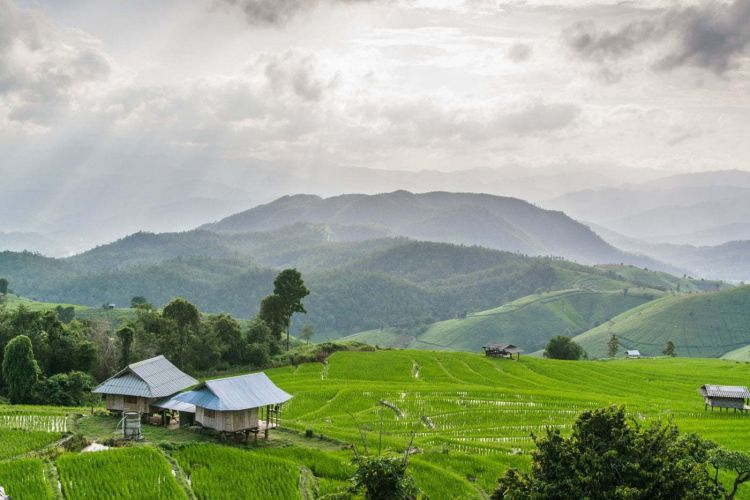
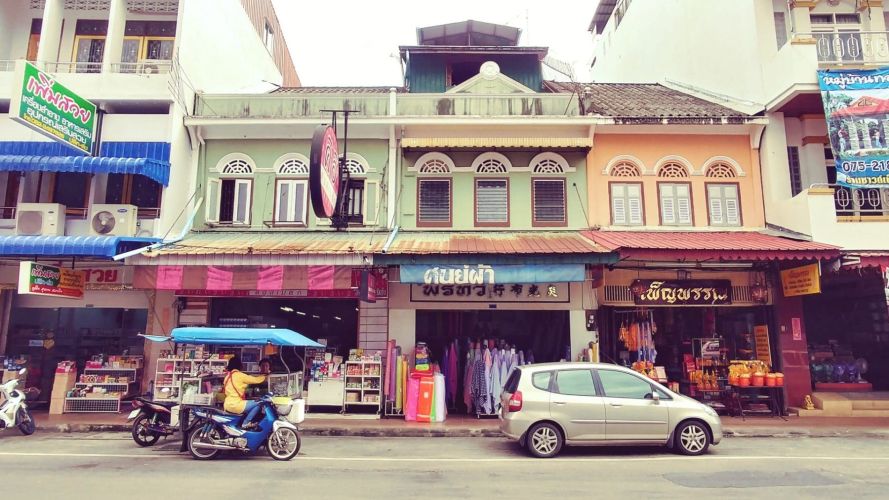
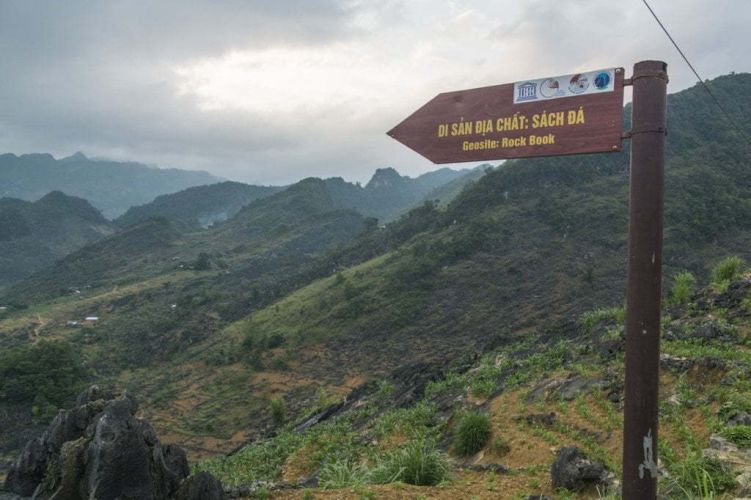
2 Comments
The Chinese Laughing Buddha or Buddha of Prosperity
The Laughing Buddha brings happiness to the home and its inhabitants. He is often confused with the historical Buddha, but in reality, he is Ho Tai, a revered Chinese monk. He was famous for his Buddhist sermons and the bag full of gifts he brought to children as a reward for coming to learn about the Dharma. Always smiling, hence his name, he is depicted in various poses with his arms above his head, reaching for the sky, or holding a bundle over his shoulder. He attracts health, joy, prosperity, and longevity, and brings a beautiful life of self-control, exemplary conduct, perseverance, commitment, and enlightened awareness. He is represented as a cheerful man with a broad smile, a wrinkled forehead, and an obese figure with a large, bare belly. In China and Japan, people stroke his belly in the hope that it will bring good luck, abundance, or fertility. He never comes empty-handed!
Hello,
Thanks for all the details !